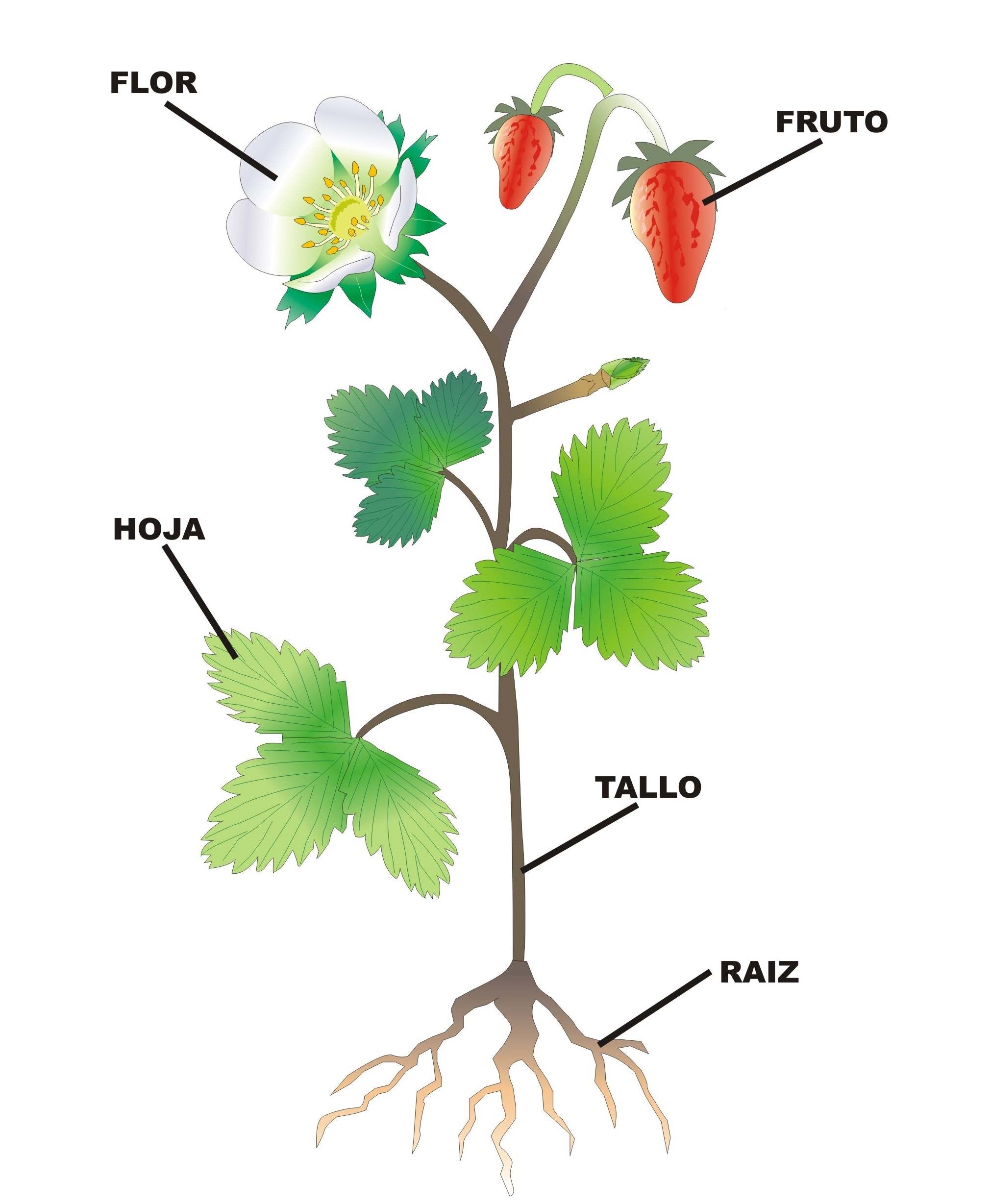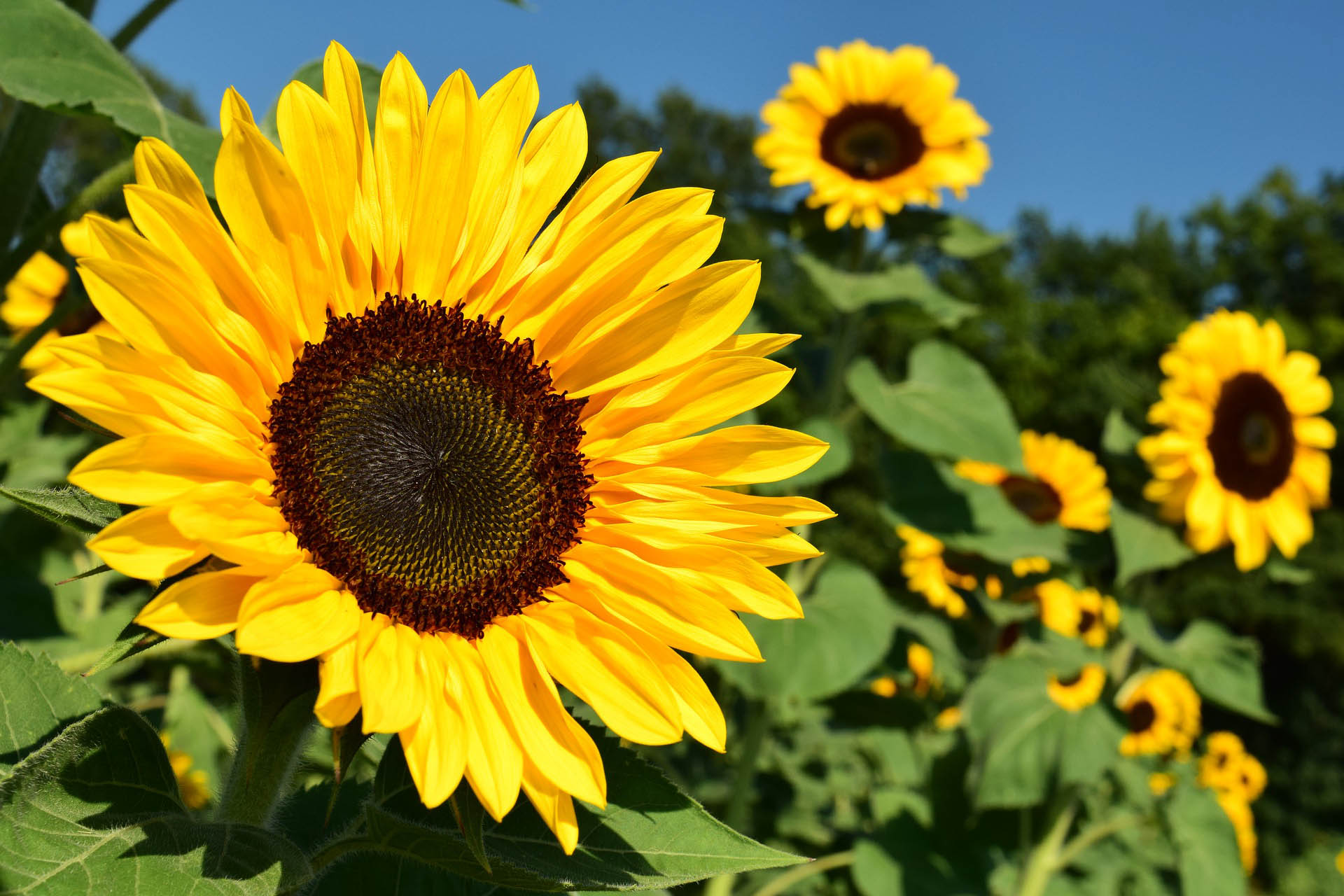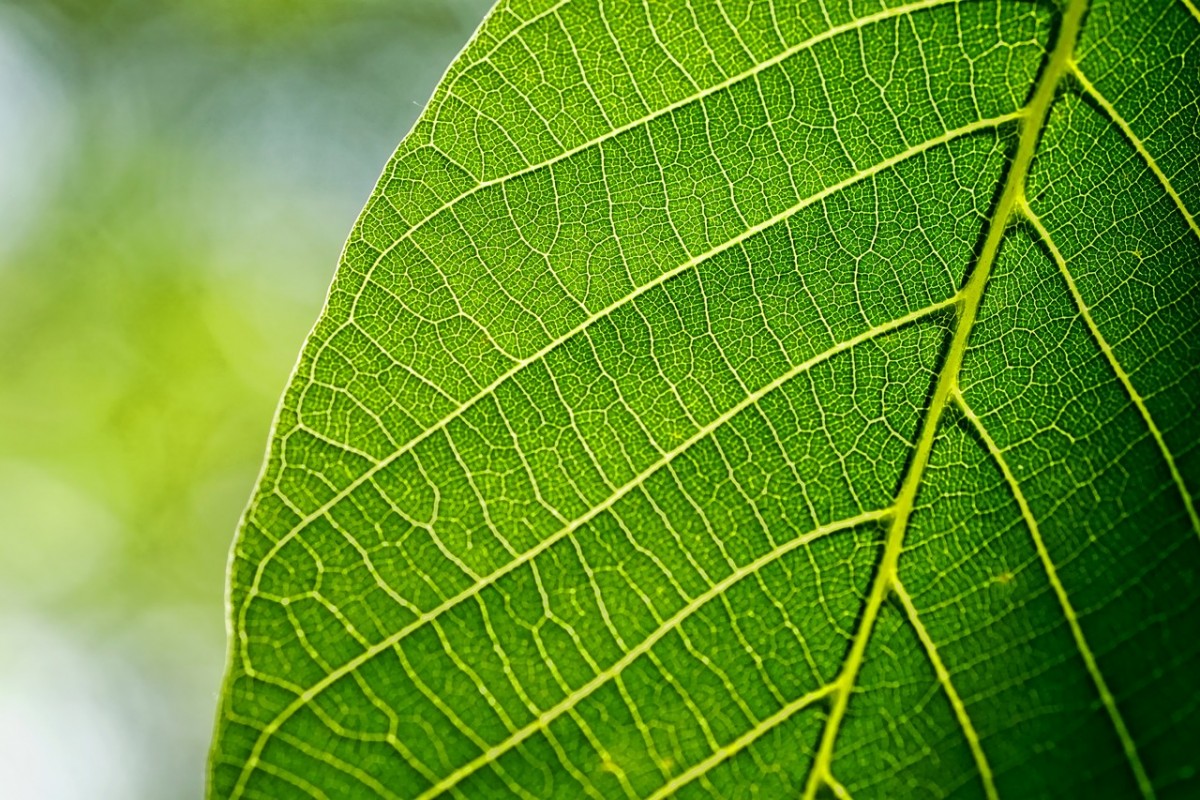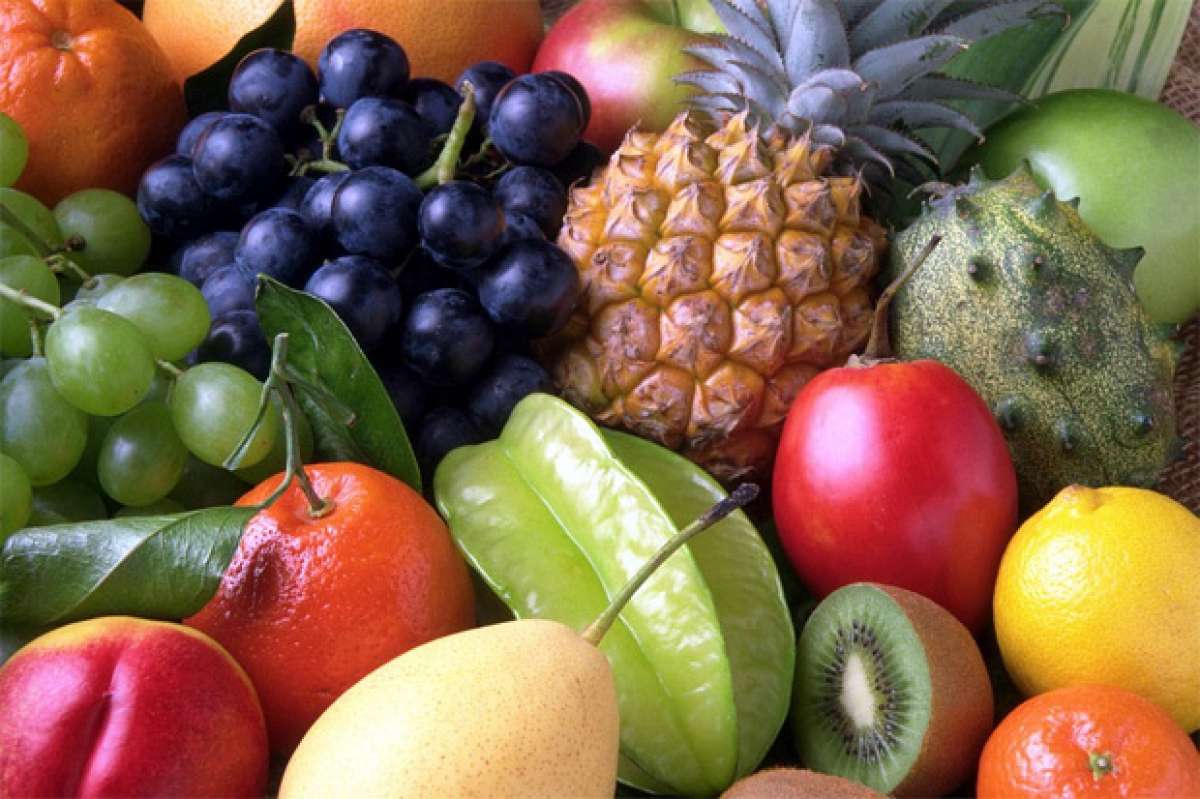The importance that plants represent for development on earth is no secret to anyone, especially for all living beings, since they are responsible for producing the oxygen that we all need to breathe. That is why we must know what are the Parts of a plant, which correspond to being such essential organisms for life.

Plants
Plants are beings full of life, they are many millions of years old on earth and belong to the plant kingdom. When their seed is born somewhere, they stay there for the rest of their lives, as they are immovable, which means they cannot move anywhere else.
Plants began their evolutionary process approximately 1.600 million years ago, so from those times to the present day they have developed and adapted to the different environmental conditions that exist in the various ecosystems. They use solar energy for their food process, that is, they are producers of their own food and they do it through the process called photosynthesis.
Plants are a gift of nature, and not only because they are the ones who provide oxygen, but also because of the visual beauty and utilities they represent, as they allow us to enjoy their flowers, fruits, shadows in the case of Tree, the oxygen we breathe and so many more wonders that we can obtain from them, that is why we must take care of them and protect them so that they continue to proliferate throughout the planet.
What are the parts of a Plant?
As living beings, it is understandable that plants have such a complex structure to be able to carry out all the organic functions they perform, that is why it is important to know the plant and its parts:
root of plants
All of us are capable of recognizing the root of a tree, and this is the first part that plants develop when they germinate, one could even say that it is one of the most important. The root is born in the subsoil, that means that it is below the ground and feeds on it.
One of the functions of the root is to consolidate the plant in the soil, these suck up the raw sap and transport it to the silver thallus, while it stores these substances, since the earth has different nutrients and minerals that at the time of rain remain dissolved. It is in this way that the roots absorb them through the absorbent hairs so that the stem and leaves remain healthy and can grow. The root consists of different parts, which are:
- root collar: This is the part that joins the stem to the root.
- Suberified or branching zone: This is the one found between the neck and the piliferous area and from where the secondary roots emerge.
- absorbent hairs: Also known as the piliferous zone and it is the one found between the suberified zone and the growth zone. It is surrounded by hairs that absorb water and minerals dissolved in it.
- Cellular division: It is just this point where the development of the root begins and it divides from the stem.
- Coping: It is a hood that protects the tip of the root when it is submerged inside the earth.
Root Functions
The root has several functions, among them we can find that of absorbing water and nutrients through the small absorption hairs, so that later the food passes to the rest of the plant through the stem.
Another of the functions it performs is to hold the structure of the plant to the environment that surrounds them, whether these are the underground roots that are deeply attached to the earth, or the aerial fibers that are attached to other plants or surfaces. Some roots have the ability to carry out photosynthesis, while others are responsible for embedding themselves in other plants to absorb nutrients from them.
Plant Stem
The stem corresponds to being one of the Parts of a plant and it is very important, since it is the base that holds it and its interior is full of life, since the leaves, fruits and flowers come from there, in addition to the fact that this is the one that transfers nutrients, water and minerals.
This substance is better known as crude sap and it travels from the roots to the leaves, all through really fine tubes called woody vessels, to then reach the leaves and combine with the carbon dioxide that they absorb from the air. and then transforms into worked sap, which they use to feed themselves.
plant flowers
Flowers are the reproductive part of plants and it is thanks to them that plants can proliferate year after year, thus managing to propagate the species. They have their origin in the cocoon and have the function of making seeds, this is made up of two parts, a male called stamen and a female called pistil, it is in the ovary of the flower where the fruits are formed after fertilization that leads to out the pollen.
These are of different sizes and colors depending on the seed, they have an edible part called pulp and their flavor is sweet, most of the shoots have very striking colors. The flowers are made up of different parts, among which are the following:
- flower stalk: Join the flower with the stem.
- reproductive organs: These are the filament, which is a very thin stem that holds the anther, that is, a kind of bag where the pollen is found. On the other hand are the stamens, and they are sticks located in the middle of the flower and that accumulate pollen, this corresponds to being the male organ of the flower.
- pistils: They are made up of the ovary, where the ovules are located, the style is a type of small tube that joins the ovary with the stigma, and the stigma, this is the female organ of the flower.
- floral wrap: This is a group of leaves that protect the reproductive organs, and it consists of two parts, which are the calyx; formed by green leaves called sepals and are on the outside of the flower, and the other part would be the corolla; corresponds to being the flower itself, made up of leaves and can be of different colors, they have the function of captivating pollinating organisms, such as bees, butterflies, Hummingbirds, among others.
Types of flowers
There is a wide variety of flowers, all of different sizes, colors, shapes and smells. The types of flowers can be classified according to their characteristics or families, although the latter is very difficult to list in its entirety due to all the families of flowers that exist, which according to experts in the field, of these there could be approximately 10 thousand kinds of flowers. .
Plant Leaves
Leaves are one of the most living parts of plants, which also correspond to being plant organs. They are mostly very fine, their green color is thanks to the element called chlorophyll, which is a type of pigment that sucks energy from the sun and then transforms it from carbon dioxide into oxygen.
The leaves have a wide variety of shapes, colors and sizes, these are found in most plants. They can be classified in many different ways, either according to their petiole, their edge, their vein or their shape, which corresponds to being the most essential classification, however the latter is based on the plant, since if it keeps its leaves throughout the year, they are perennial, and if you lose them in the cold months, they are deciduous.
Sheet Functions
The leaves have three main functions, which are the following:
- They carry out the process of photosynthesis and thus acquire energy from the sun's rays.
- They allow the plant to breathe, exchanging gases at night.
- They manage to perspire, letting excess water escape through them.
Fruit of the Plants
Fruits are also included in Parts of a plant and they are in charge of protecting the seeds and guaranteeing their disintegration, one or more seeds are located in the inner part of the flower, they can develop in just a few days or take up to years to do so, an example of this is the pine tree.
However, not all plants bear fruit, although those that reproduce through sexual reproduction by seeds usually bear them, since after the flower is fertilized, then it produces a seed and from there the fruit is formed.
Types of Fruits
In the same way that happens with leaves and flowers, it also happens with fruits, since there are a large number of fruits or fruits of vegetables, and all these types that are consumable, come from a plant or tree, including the fruits that we know as dried.
Fruit Functions
The function fulfilled by the fruits as Parts of a plant, is to provide protection to the seeds and at the same time, after consuming a fruit and planting or watering it in fertile areas, the result is the spread of this species in all possible places.
Plant Reproduction
Plants have two ways of reproducing, which are the following:
asexually
In this, a single parent participates and results in the creation of genetically equal subjects.
- Strawberry runners: These are very fine stems that grow parallel to the ground and from which a new plant grows.
- Potato tubers: They are underground stems that accumulate nutrients.
- Onion Bulbs: They are similar to tubers, but in this the stem is surrounded by fleshy leaves where nutrients accumulate.
- Rhizomes Rushes: These are also stems that are born underground and from which new plants emerge.
Sexually
In this reproduction of Flora Two reproductive organs that give rise to male and female gametes participate, the children are not identical but they do have characteristics similar to the parents.
Reproduction of seedless plants
This applies to plants that do not produce seeds, then the union of the gametes creates a conformation from which the spores are born.
- Reproduction in Mosses and Liverworts: It happens that the spores are created in the capsules located in the upper part of the capsuloid and when these mature, they open and release the spores that give rise to a new individual.
- Fern Reproduction: In ferns, the spores are created in the sporangia, which are located in internal lumps called sori and when the sporangia mature, the spores are released, giving way to new individuals.
Sap Carried by Plants
The first is the Raw Sap, and it is a substance that comes from the assimilation of water and nutrients through the roots, this type of sap rises through the woody vessels that constitute the Xylem, until it reaches the leaves where it is transformed by the photosynthesis in the brewed sap
On the other hand there is the elaborated sap, they are fluid that are born in the photosynthesis of the plants, this is the transformation of raw sap by photosynthesis into nutritious juices that will give way to the feeding of the plants, which circulate through the Liberian vessels and make up the phloem, in addition to sending nutrients to all parts of the plant.
Photosynthesis Process
Photosynthesis is carried out by plants transforming water and carbon dioxide into nutrients they need to feed and grow healthy, just as this process is very necessary for the life of human beings.
Sunlight participates in this transformation and pigments called chlorophyll, which are located in chloroplasts, also participate. These are cells in charge of photosynthesis, they are found in the leaves and other parts of the plant, this is the reason why photosynthesis is carried out both in the leaves and in the rest of the plant.
In this process, organic matter and oxygen are acquired, the latter is used for cellular respiration and part of it will go outside, which is really necessary for the rest of the living beings.




